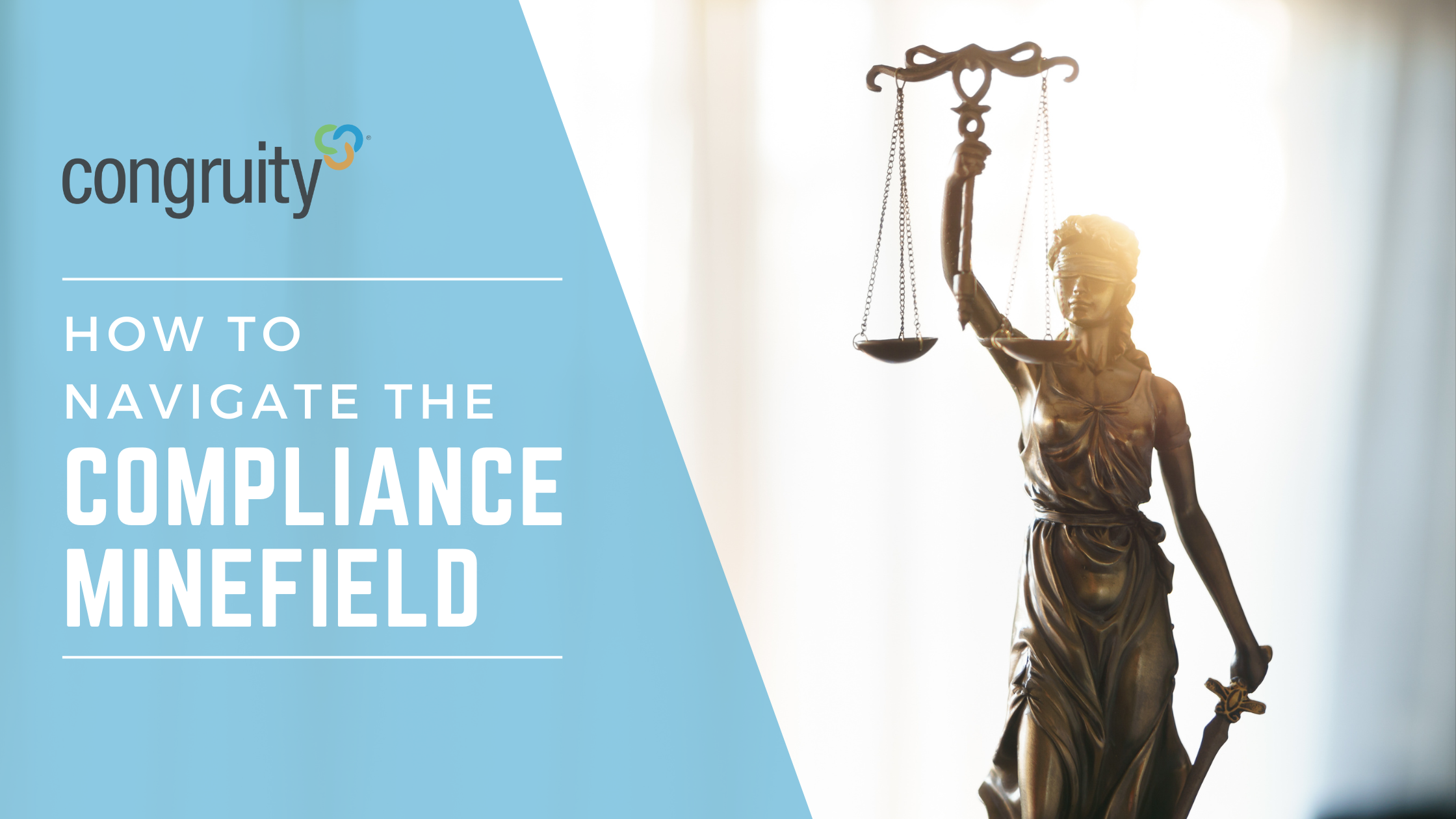Navigating the Compliance Minefield

Even under the best of circumstances, regulatory compliance concerns can strike fear into the heart of even the most seasoned HR professional. But with today’s multi-state employment complexities, a host of new regulations, and increased scrutiny from regulatory bodies, this already challenging job has become even tougher.
The best way to keep ahead of compliance concerns and, more importantly, avoid the fines, penalties, and reputational risk that accompany violations, is to make sure you’re mindful of some of the most common compliance pitfalls and how to avoid them.
Here are our top three key compliance issues to keep on your radar in 2024:
Maintaining proper employee classification (and the records to prove it)
Independent contractor or regular employee? Exempt or non-exempt status? Is the work conducted within your offices or at some other location? Answering these questions isn’t as straightforward as it used to be, so be sure you’re up-to-speed on the latest definition criteria or working with a knowledgeable partner to make sure you’re staying on the right side of regulations.
To determine that you’re accurately classifying employees and independent contractors, ask yourself three fundamental questions:
-
Is your company controlling what the worker does and how the work is completed?
-
Does your company directly control the financial aspect of the worker’s job?
-
Does your company provide benefits (insurance, pension, leave, etc.) to the worker?
If you answered “yes” to any (or all) of these questions and you’re still considering that individual a contractor, you should probably dig a bit deeper. The IRS has a great resource page that can help out, so hit this link for more information. (Or, of course, we would be more than happy to lend a hand. Just let us know, and we’ll get a meeting on the books.)
A potentially thornier issue, however, is determining if employees are exempt or non-exempt. There are several categories of employees that meet the definition of exempt worker – ranging from executive to administrative roles – that generally meet the minimum criteria and are exempt from the Fair Labor Standards Act (FLSA) regulations. (Hence the name.)
Non-exempt employees, however, are subject to a host of additional wage and hour policies, and penalties for non-compliance can be stiff… including tens of thousands of dollars and even jail time for repeat offenders.
All of the above is in reference to Federal policies, but there could be other state and local implications that impact you and your workers. Also, the way you answer these questions – and the way you classify employees – can have a dramatic impact on payroll, withholding, and reporting practices, so be sure to consult with your local labor law attorney or team up with an organization like Congruity HR to make sure you’re in the clear.
Keep your workplace safe and your employees healthy
When the term “workplace safety” comes up, most tend to think of factory floors, bustling kitchens, and other types of businesses where risky equipment and materials are around. However, ensuring a safe and healthy work environment is not only a legal obligation but also crucial for maintaining employee morale and productivity.
The most noteworthy compliance concern is for those organizations that fall under Occupational Safety and Health Administration (OSHA) regulations, which cover a wide range of topics, including hazard communication, personal protective equipment, and recordkeeping. But from a compliance standpoint, the definition of “safe environment” is much broader and has applicability to more types of businesses.
The Americans with Disabilities Act (ADA) straddles the worlds of both discrimination and safety, delivering accommodations designed to give individuals with diverse needs all the rights, protections, and opportunities necessary to be productive and participate at work. Depending upon the job and work environment, mobility considerations, service animal support, and even parking space number and proximity to the building must be taken into account.
Of course, harassment laws and policies – which typically fall under the Equal Employment Opportunity Commission (EEOC) oversight – must be in place to provide a safe and welcoming environment for all throughout each season of their employment experience. From recruiting and hiring practices to day-to-day operations, to terminations and other similar activities, this is an aspect of employment safety and fairness that is under a particularly bright light at the moment. (As it should.)
Maintaining privacy and fairness in the age of AI
Love it or loathe it, embrace it, or reject it; regardless of how you feel about Artificial Intelligence (AI), it looks like it’s here to stay. In addition to the employee reskilling/upskilling challenges that AI can introduce, there are some pressing compliance concerns to address as well.
Confidentiality, for example, is essential in protecting employees' personal information, such as health records, social security numbers, and financial data. HR professionals must ensure that this information is securely stored and only accessed by authorized personnel. AI can help in this regard by automating data management and providing additional layers of security, such as biometric authentication and encryption, but it can also serve as a potential source of vulnerability if employee data isn’t adequately protected.
With AI-powered tools becoming more prevalent in the workplace, it is essential for HR professionals to establish clear guidelines for their use. Employees must be informed about the data collected by these tools and how it is being used. Transparency and consent are key to ensuring that workers' privacy is respected.
Finally, fairness is also a top priority for HR professionals, as AI can sometimes perpetuate existing biases in the workplace. To avoid this, HR professionals must be vigilant in monitoring AI systems for bias and take steps to ensure that they are not inadvertently discriminating against certain groups of employees. Regular audits and training can help to identify and address any issues that may arise.
Bringing it all together
With employment laws changing on a regular basis and as your organization grows and evolves, keeping pace with compliance can be challenging. Internal audits, employee handbook reviews, and consistent employee communication can go a long way in avoiding problems, and when combined with good recordkeeping, you should be able to stay in the clear.
If you would like to learn more about workplace compliance issues, or if you would like to get some help maintaining compliance on a regular basis, the Congruity team is here to help.
Click here and find out how.


